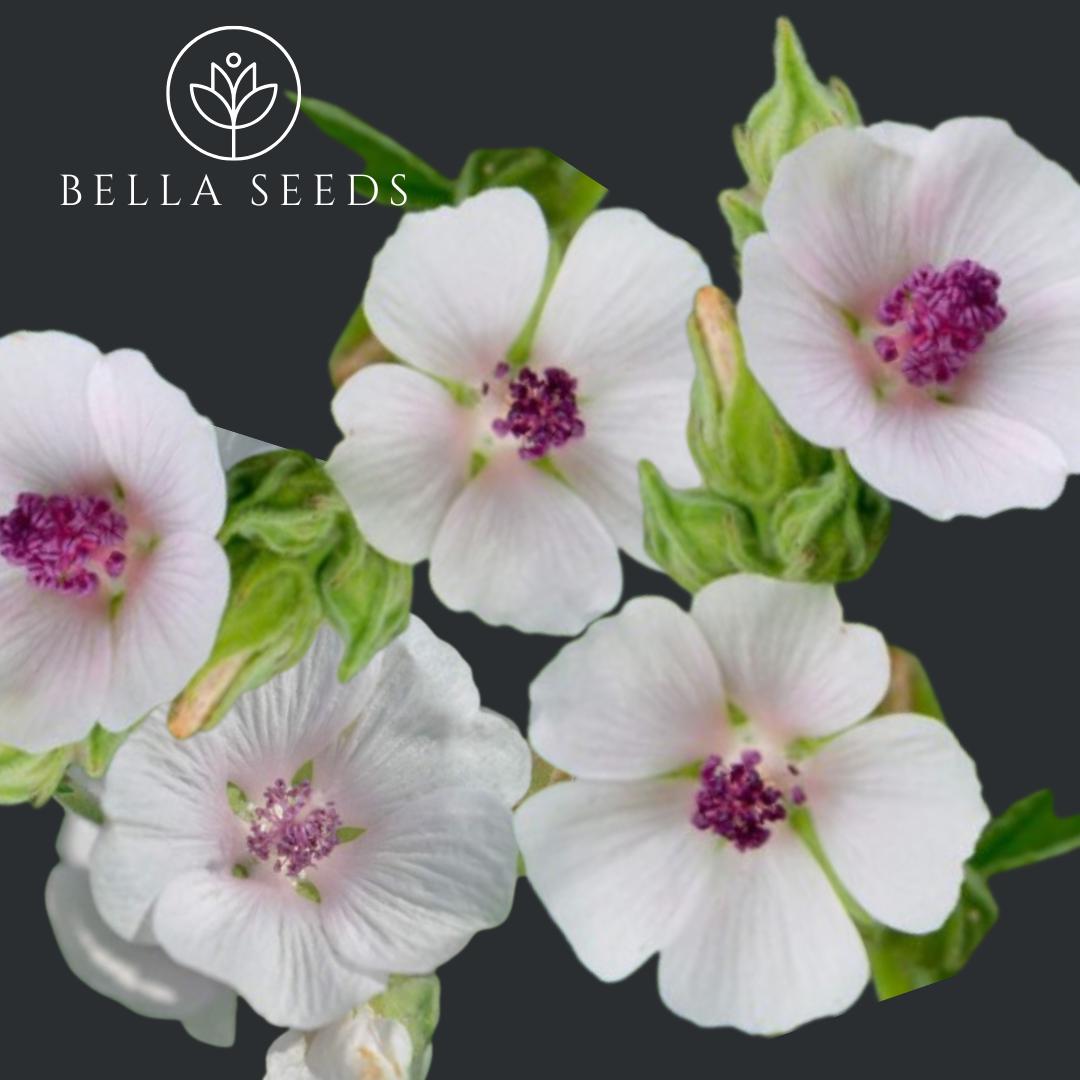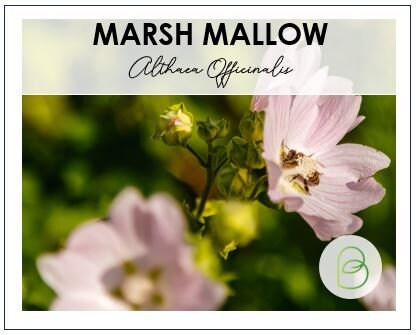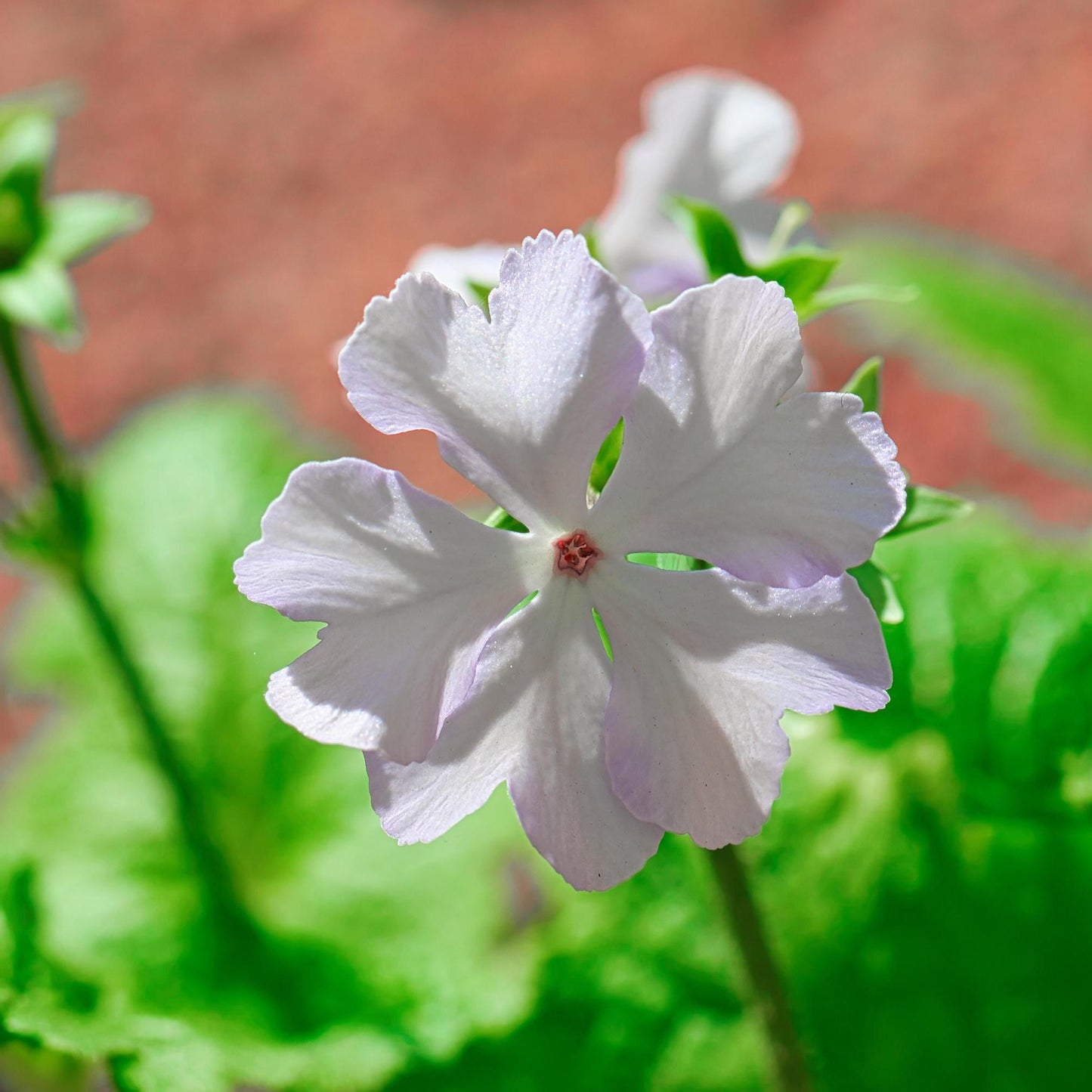My Store
Marsh Mallow
Marsh Mallow
Couldn't load pickup availability
20 seeds
The marshmallow plant, scientifically known as Althaea officinalis, is a perennial herbaceous plant that is native to Europe, Western Asia, and North Africa. It is a member of the mallow family (Malvaceae). Here's a description of the marshmallow plant:
**Appearance:**
Marshmallow plants typically grow 3 to 4 feet tall and have a bushy, upright form. The leaves are soft, velvety, and heart-shaped, with serrated edges. The plant produces pale pink to white flowers with five petals, resembling hollyhocks, another member of the mallow family. The flowers are usually arranged in clusters along the stem and bloom from mid-summer to early fall.
**Habitat:**
Marshmallow plants thrive in damp and marshy areas, such as the edges of ponds, riverbanks, and salt marshes. They prefer full sun to partial shade and well-drained, moist soil.
**Cultural and Historical Significance:**
Historically, marshmallow plants were valued for their medicinal properties, particularly the mucilaginous sap extracted from the roots. This sap was used to make a sweet, sticky concoction, which eventually led to the creation of the modern marshmallow candy. In ancient times, the plant's roots and leaves were used for various medicinal purposes.
Today, marshmallow root is still used in herbal medicine.
The marshmallow plant, scientifically known as Althaea officinalis, has the following specifications:
**Plant Type:** Perennial herbaceous plant
**Height:** Typically grows 3 to 4 feet tall, but can reach up to 6 feet under optimal conditions
**Leaves:** Soft, velvety, and heart-shaped with serrated edges
**Flowers:** Pale pink to white, resembling hollyhock flowers, with five petals, arranged in clusters along the stem
**Habitat:** Thrives in damp and marshy areas, such as the edges of ponds, riverbanks, and salt marshes. Prefers full sun to partial shade and well-drained, moist soil.
**Culinary Uses:** The modern marshmallow candy, though inspired by the plant, is made with sugar, corn syrup, and gelatin and does not contain the plant's original medicinal components.
Please note that these specifications can vary based on environmental conditions and cultivation practices.
Sowing marshmallow seeds is a straightforward process. Here's a step-by-step guide to help you get started:
1. **Seed Selection:** Choose high-quality marshmallow seeds from a reputable supplier. Fresh seeds are more likely to germinate successfully.
2. **Timing:** Marshmallow seeds can be sown directly outdoors in the spring or fall. In colder climates, spring planting after the last frost is ideal.
3. **Soil Preparation:** Prepare a well-draining, moist soil bed in a sunny to partially shaded area. Loosen the soil and remove any debris to create a fine seedbed.
4. **Sowing Seeds:** Scatter the marshmallow seeds evenly over the soil surface. Press them lightly into the soil using your hand or a flat board. Since marshmallow seeds require light for germination, do not bury them too deep. A light covering of soil or a gentle press into the surface is sufficient.
5. **Watering:** Water the seeded area gently, ensuring the soil is consistently moist but not waterlogged. Use a fine mist or a watering can with a rose attachment to avoid disturbing the seeds.
6. **Germination:** Marshmallow seeds typically germinate within 10 to 20 days under suitable conditions. During this period, continue to keep the soil consistently moist.
7. **Thinning:** Once the seedlings have several leaves and are a few inches tall, thin them out to provide adequate space for growth. Leave about 18 to 24 inches between individual plants.
8. **Care:** Marshmallow plants require regular watering, especially during dry spells. Mulching around the plants can help retain moisture and suppress weeds.
9. **Harvesting Seeds:** Marshmallow plants will produce seed pods once they mature. Allow the pods to dry on the plant. Harvest the pods when they are brown and brittle. Remove the seeds from the pods for future planting.
Remember that specific care requirements might vary based on your local climate and soil conditions, so it's always a good idea to consult local gardening resources or experts for region-specific advice.
Multiple orders of a single item may be combined into 1 seed envelope unless otherwise instructed by buyer.
Multiple orders of a single item may be combined into 1 seed envelope unless otherwise instructed by buyer.We take great care to provide high-quality seeds, corms, and bulbs, all of which are tested for acceptable germination rates. However, because successful growth depends on various factors beyond our control—such as planting conditions, weather, and care—we cannot offer refunds for seeds, corms, or bulbs that do not germinate or sprout.
Thank you for your understanding and support. If you have any questions about planting or care, we’re happy to help!
Share





